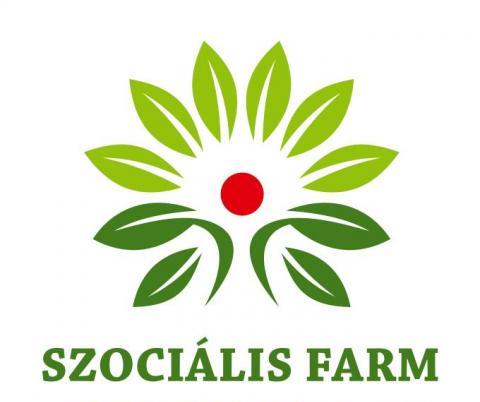
Felelős Gasztrohős, the Hungarian member of the CO-FRESH project, with the cooperation and support of Pilze-Nagy Kft., carried out its campaign “On the tablecloth: the mushroom” in October 2022, the aim of which is to increase the consumption of mushrooms. as widely known as possible among consumers. the inherent values and challenges. Mushrooms are one of our oldest sources of food, and they are also seen as a new protein source of the future.
In the framework of the professional program “LET’S GO TO THE ALTERNATIVE PROTEIN! NOT A PLANT, NOT AN ANIMAL, BUT A MUSHROOM”, we looked for the answer to how to deliver fresh, environmentally friendly packaging during a round table discussion. to consumers. On the other hand, the conversation was about what treasures, exploited and still unexploited locations the world of mushrooms hides in our nutrition, tourism and food production.
The mushroom round table:
• Dr. Somos Adrienn Nagy, Pilze-Nagy Kft.
• Eszter Kiss-Szabó, Felelós Gastrohós,
• Tibor Vrancsik, Erdőkert,
• Tibor Sebestyén, Ökosys Zrt.
• Ágnes Szegedyné Fricz, Kislépték Association, moderator,
Eszter Kiss-Szabó highlighted the results achieved in the mushroom campaign of Responsible Gastrohós. In the online campaign and at the product presentations organized together with the restaurants, they were able to address a wide range of consumers. What a diverse role mushrooms play in our everyday meals, what health-preserving properties are hidden in cultivated and wild mushrooms. Useful information about its purchase and storage, as well as countless recipes, were shared during the campaign.
dr. Adrienn Nagy explained in detail that, as a member of the CO_FRESH project, during the mushroom campaign, countless useful, practical knowledge was delivered to consumers through online communication channels. One way to increase fresh consumption is to teach consumers how to store fresh mushrooms after purchase and for how long, as well as to present new recipes and kitchen technology solutions.
Wild mushrooms have a history of thousands of years in the nutritional and medicinal treatment of mankind. Mushroom inspector Tibor Vrancsik not only collects forest mushrooms, but also tries to use every forum to promote the use of forest mushrooms. Thanks to recent promotional campaigns, the truffle is beginning to regain its former glory in Hungarian gastronomy. In his opinion, guided forest tours and truffle “hunts” provide a new tourist opportunity. By presenting the natural values of the forest-field, it is possible to expand the knowledge of the guests/consumers and arouse their interest in mushroom consumption.
Hospitality professionals do not have adequate knowledge of the fact that, in addition to cultivated mushrooms, different forest mushrooms, e.g. boletus, chanterelles, truffles, etc., how many ways they can be used.

One of the main goals of the CO-FRESH project is to find new solutions for the packaging of fresh organic oyster mushrooms. The experience of recent years shows that another obstacle to the consumption of fresh mushrooms is that in many cases the conditions for the handling and storage of fresh mushrooms are not met in commercial chains. Fresh mushrooms are almost exclusively sold packaged to consumers. Based on current commercial practice, it can be said that packaging materials represent the biggest environmental burden and cost for fresh products.
Tibor Sebestyén explained the possibilities for fresh vegetable, fruit and mushroom growers, small producers, and caterers to use environmentally friendly packaging materials instead of plastic packaging materials for offering and packaging fresh products and ready meals. New packaging materials can only partially represent an alternative to plastic packaging materials. Their production costs are even higher in many cases. Biodegradable materials can only be used to a limited extent for storing fresh products and liquid foods. Compostability is also not resolved in all cases. Based on the research results of the past year and the current worldwide energy crisis, Dr. According to Adrienn Nagy, it is both economically and technologically impossible and unnecessary to further extend the shelf life of fresh products. In the case of fresh mushrooms, the realistic expectation of the product is that it should retain its properties for 3-4 days. This should be strived for during the development of goods handling, packaging and storage technologies. In addition, special attention should be paid to consumer education: how to store and use fresh mushrooms.
Laura Mravik-Galá, the invited speaker of the round table discussion, on behalf of the Association for the Protection of the Interests of Packaging-Free Shops (CSOMBÉK), said that packaging-free shops are becoming more and more popular in Hungary. Depending on the product, the customers buy the products in their own, reusable packaging materials. This purchasing method greatly reduces the amount of packaging materials, since in addition to single-use individual packaging materials, there is no need for collective packaging (e.g. cardboard boxes, foil, etc.). More and more local products are available to consumers in the store network. The growth of this way of shopping also requires the education of consumers on the one hand, and the training and support of local producers on the other.
It took place: Hungary, 7400 Kaposvár, Guba S. u. 40., MATE Kaposvári Campus – University
Date: 10.10. 2022. 09:00 – 15:30
The II. REL EXPO Mushroom corner exhibitors:
• Pilze-Nagy Kft. mushroom grower,
• Treasures of Mother Earth, mushroom expert Gizella Borgulya,
• Oriens Mushroom Kft. mushroom grower and processor,
• Figura Attila, mushroom grower and producer,
• Ökosys Zrt. production and distribution of environmentally friendly packaging materials,





























